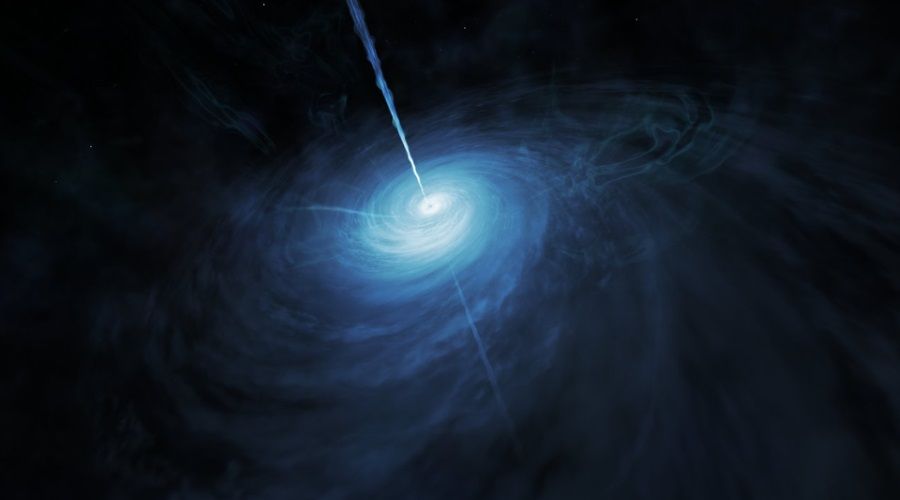Astronomers have observed the brightest quasar of the early Universe
Astronomers using the Hubble Space Telescope have spotted a quasar as bright as 600 trillion suns. It is the brightest such object ever observed in the early Universe. The discovery could provide much valuable information about the birth of galaxies when the Universe was less than a billion years old.
Quasars are among the brightest objectsóin the Universe. They are a type of galactic nucleus, and are driven by supermassive black holes at the center, surrounded by an accretion disk formed by falling matter. Matter falling into a black hole releases gigantic amounts of energy, które manifested in the form of extremely intense electromagnetic radiation, whichóre covers almost the entire spectrum: from radio waves to high-energy gamma rays.
Newly discovered quasar cataloged as J043947.08 + 163415.7, is no exception. Its brightness is equivalent to about 600 trillionóin the sun, and a supermassive black hole, whichóra powering it, has a mass of several hundred millionóat times the size of our sun.
J043947.08 + 163415.7 is located at a distance of 12.8 billion light years from us. It was spotted using strong gravitational lensing thanks to one of the most advanced ground-based and space-based telescopesów, including the Keck Observatory, the James Clerk Maxwell Telescope and the Hubble Space Telescope'a. The light received from this object began its journeyó¿ when the Universe was about a billion years old. This unique object provides insight into the birth of galaxies and could provide a wealth of information on the subject.
Scientists are searching for these unique objectsów for more than 20 years. A rare and fortuitous event made J043947.08 + 163415.7 appeared to them in its full glory. The event in question is gravitational lensing. Galaxy, whichóra found on the line between the quasar and Earth, curved the radiation it emitted and made it appear three times larger and about 50 times brighter than it would have been without the effect. The quasar would have remained undetected if not for the force of gravitational lensing.
– This is something we have been looking for a long time,” said the head of theówny author of the publication Xiaohui Fan of the University of Arizona. – We don’t expect to see many brighter quasarsóin the observable Universe – added.
The discovery provides a rare opportunity to study what role quasar-accompanied black holes played in the formation of stars in the very early Universe and how they influenced the formation of galaxies. – This detection is a very important discovery. For decades we thought quasars in the early Universe should be common objects, but this is the first of its kind które we found – explained Fabio Pacucci, coółautor of the publication working at Yale University.
Data collected by telescopes show not only that the supermassive black hole is accreting matter at an extremely high rate, but also that the quasar can produce up to 10,000 stars a year. Although the actual rate of star formation may be much lower than the brightness of the quasar suggests. Observations could disturb the lensing effect.
The discovery of a quasar can give róalso indicatedówks on the evolution of the Universe itself. Quasars such as J043947.08 + 163415.7 existed in the so-called. er of regionalization. It is a period in the evolution of the Universe, when the energetic radiation of young galaxies and quasarsóin reheated waterór scattered in space, który has already cooled 400,000 years after the Big Bang. Studying such quasarsów could give insight into this still mysterious era of.


